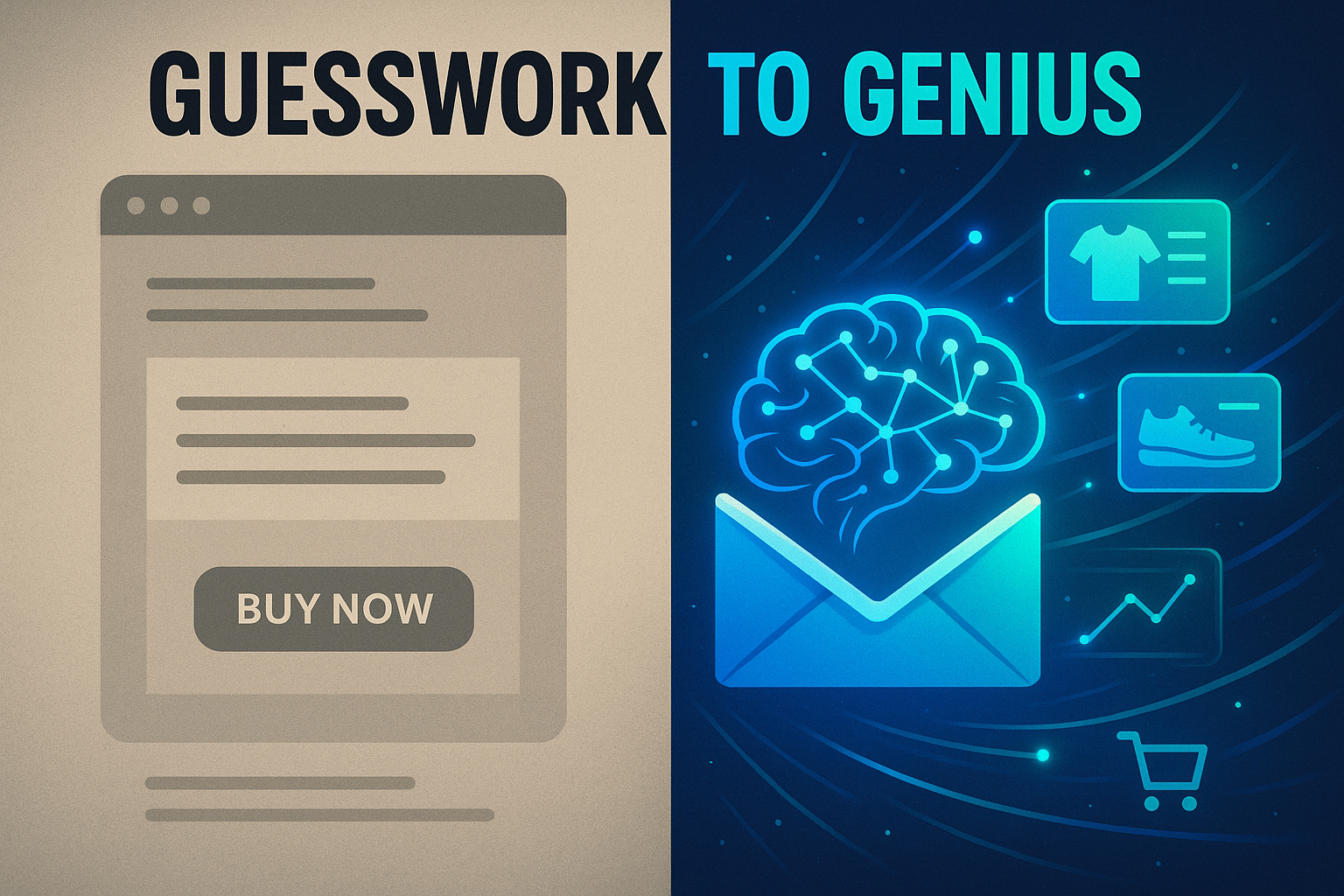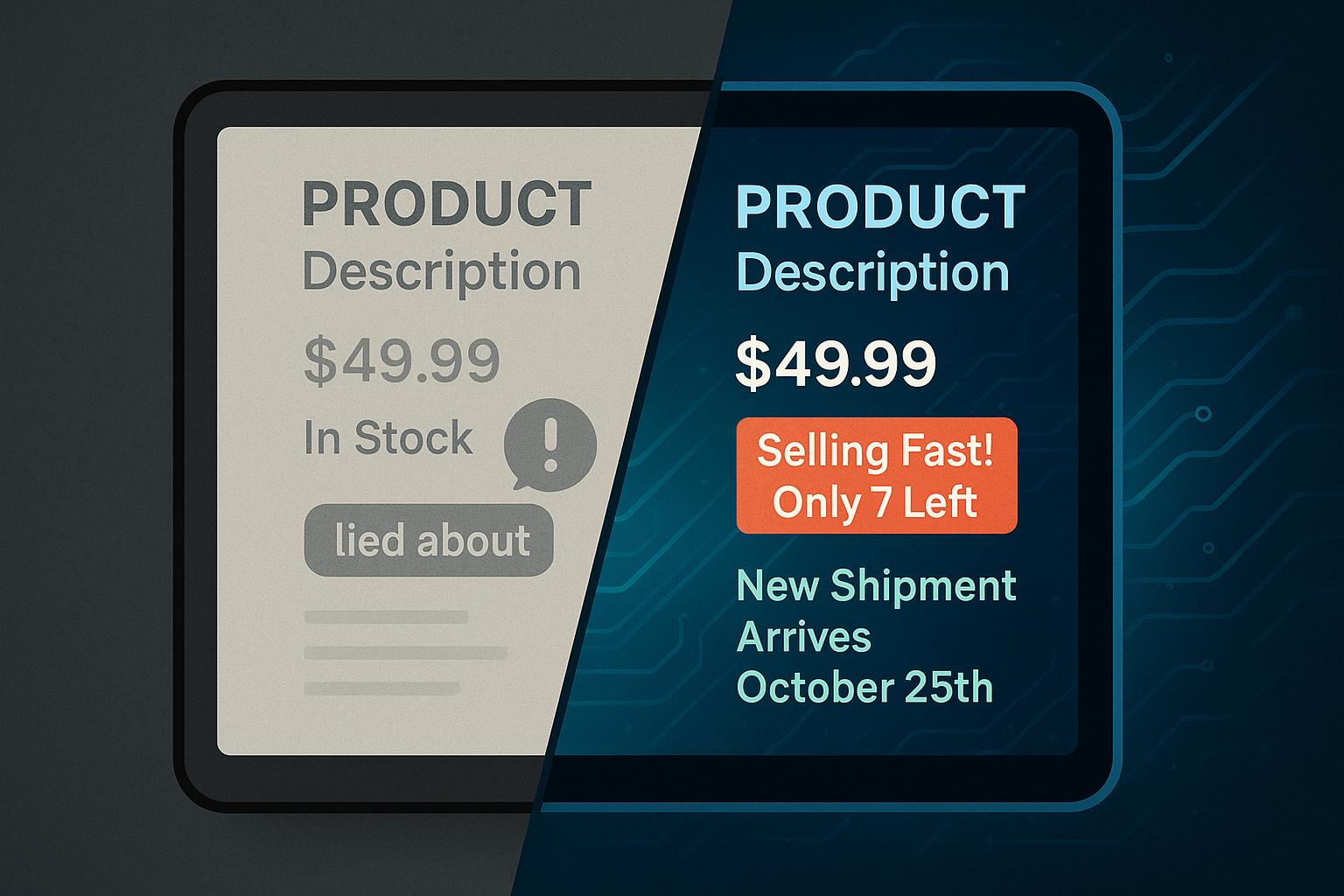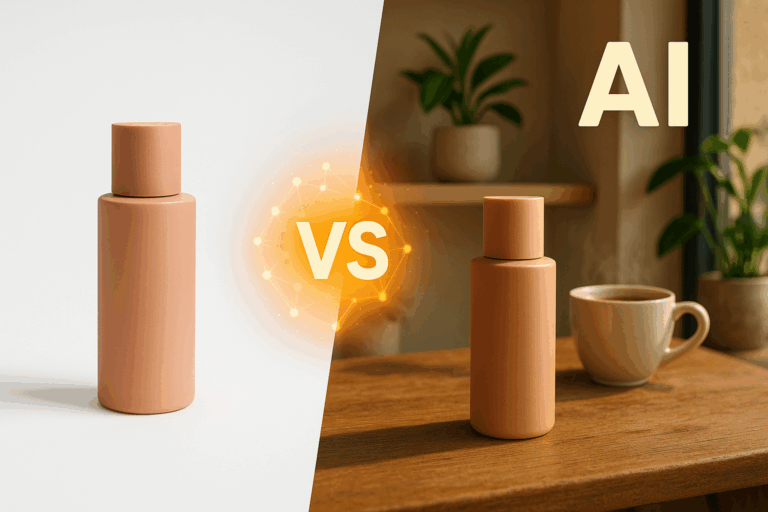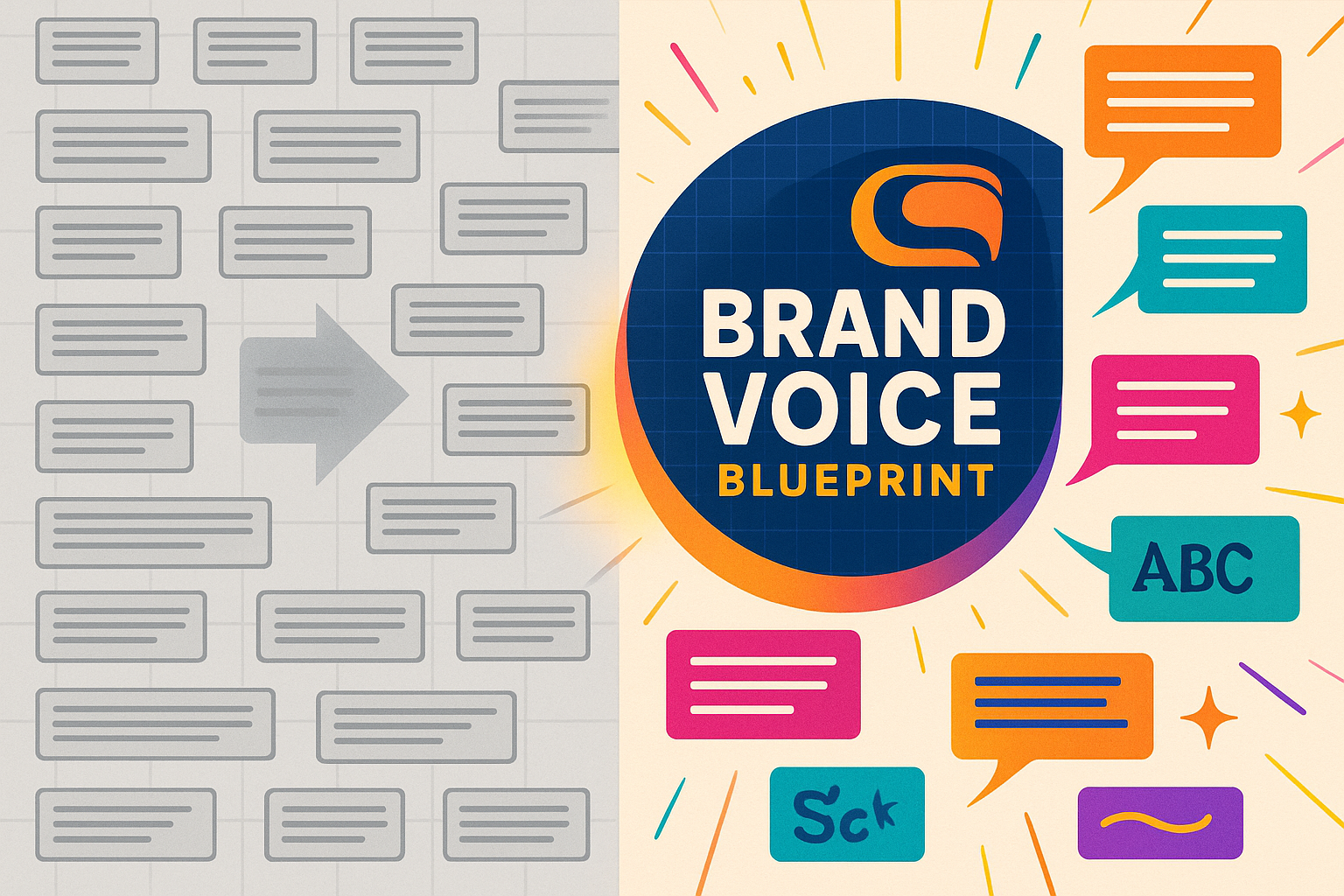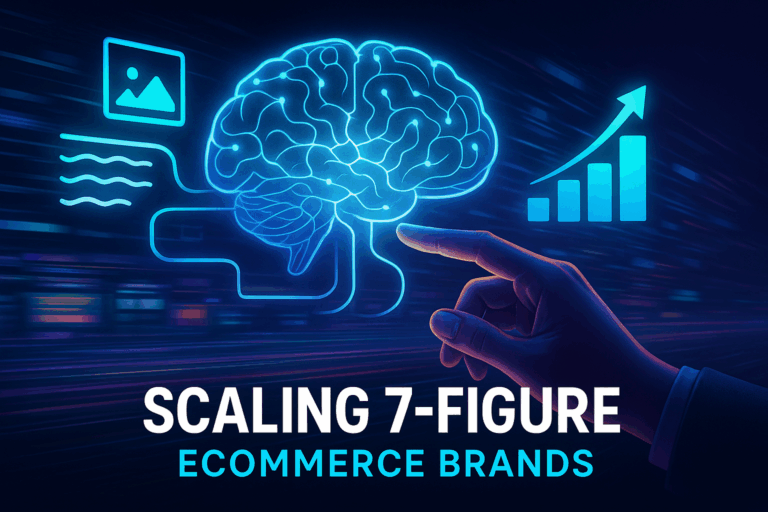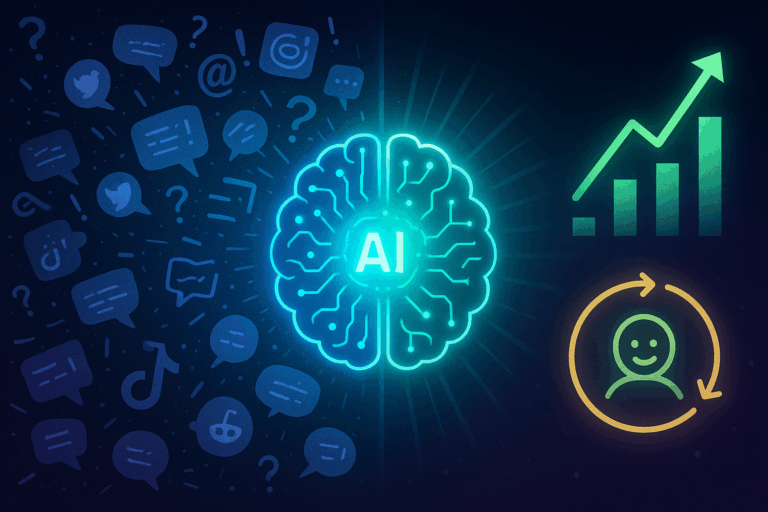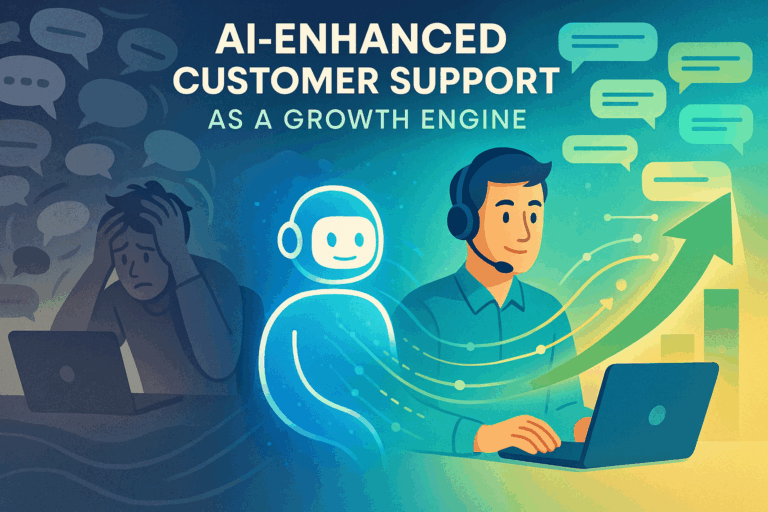Ever spent hours crafting the “perfect” email campaign, only to see it land with a thud? You picked the right products, wrote clever copy, and sent it to a massive list. The result? A lackluster 12% open rate and a handful of clicks.
If this sounds familiar, you’ve hit the ceiling of traditional email marketing.
For years, the goal has been to send the right message to the right person. But “right” was often based on guesswork—static segments, A/B tests on small samples, and a “one-size-fits-most” approach.
Now, imagine a different scenario. An email lands in your customer’s inbox at the exact moment they’re most likely to shop. The subject line feels like it was written just for them. The product recommendations aren’t just things they’ve browsed before, but things AI predicts they’ll love next.
This isn’t science fiction. This is email marketing powered by Artificial Intelligence, and it’s transforming the entire ecommerce landscape from a broadcast channel into a deeply personal conversation.
From Guesswork to Genius: What Exactly is AI-Driven Email Marketing?
At its core, AI-driven email marketing is about shifting from a system of rigid, pre-programmed rules to one that learns, predicts, and adapts in real time. Instead of you telling your email platform, “Send this email to everyone who bought a blue shirt,” AI allows the platform to figure out who needs to see what, and when, all on its own.
This “magic” is powered by a few key technologies that work together behind the scenes.
The “Big Three” AI Concepts Behind the Curtain
You don’t need a degree in data science to understand how this works. Think of it like hiring a team of super-smart assistants who are experts in different areas.
- Machine Learning (ML): The Smart Assistant. Imagine a personal assistant who learns your coffee order, knows when you need a break, and anticipates your needs before you even ask. That’s Machine Learning. It analyzes vast amounts of customer data—clicks, purchases, browsing habits, time on site—to identify patterns and learn what works for each individual customer.
- Predictive Analytics: The Forecaster. This assistant is a master of predicting the future. Based on past behavior, it answers critical questions like, “Which customers are most likely to make a purchase in the next 7 days?” or “Who is at risk of churning?” This allows you to be proactive, not reactive.
- Natural Language Processing (NLP): The Wordsmith. This is the AI’s ability to understand and generate human-like text. It’s the genius behind crafting five different subject lines and predicting which one will resonate most with your “deal-seeker” segment versus your “luxury buyer” segment.
These technologies work in concert to create an email experience that feels less like marketing and more like a helpful, personal service.
5 Ways AI Transforms Your Email Strategy (From Good to Unforgettable)
AI isn’t just about making small improvements. It fundamentally changes what’s possible with your email campaigns. Here’s how.
1. Hyper-Personalization That Actually Feels Personal
For years, personalization meant little more than inserting a [First_Name] tag. AI goes lightyears beyond that. It enables:
- Predictive Product Recommendations: Instead of just showing products a customer has already viewed, AI can recommend items they’re likely to buy next based on the behavior of thousands of similar shoppers.
- Dynamic Content Blocks: Imagine an email where the hero image, call-to-action, and even the copy changes for every single recipient based on their preferences, loyalty status, or predicted intent. A skincare brand could use it to send a “restock reminder” email before the customer is predicted to run out.
2. Segmentation That Thinks Like a Marketer
Manually creating segments is time-consuming and often based on broad categories. AI acts as a data analyst, creating hyper-specific micro-segments on the fly. It can instantly group customers into nuanced clusters like:
- “High-value customers who haven’t purchased in 60 days but recently browsed the new winter collection.”
- “First-time buyers who are likely to become repeat purchasers if offered a specific incentive.”
This allows for incredibly targeted campaigns that speak directly to a customer’s current situation.
3. Send Times That Hit the Mark, Every Time
The age-old debate of “when is the best time to send an email?” is over. The answer is: it’s different for everyone. AI analyzes the individual open patterns for every subscriber on your list and delivers your email at the precise moment they are most likely to engage. No more guessing if Tuesday at 10 AM is the magic slot.
4. Subject Lines and Copy That Convert
Generative AI tools are now built into major email platforms, acting as a creative co-pilot. They can:
- Generate dozens of subject line variations.
- Predict which version will perform best for different audience segments.
- Rewrite copy to match a specific tone of voice (e.g., “make this more urgent” or “make this more playful”).
This level of creative testing at scale was impossible before. This optimization isn’t just for emails; it’s a core part of a modern Generative Engine Optimization (GEO) strategy, ensuring your messaging is compelling across all platforms.
5. Automated Journeys That Adapt and Evolve
Standard automated workflows, like abandoned cart emails, are static. Everyone gets the same sequence of three emails. AI makes these journeys dynamic. Based on a user’s actions (or inaction), the AI can alter the journey in real time—changing the timing, the product recommendations, or the discount offered to maximize the chance of conversion.
AI in Action: A Look Inside Klaviyo and Mailchimp
Leading email platforms are already integrating these powerful features, making them accessible to ecommerce brands of all sizes.
- Klaviyo excels with its powerful predictive analytics. It can automatically calculate and assign properties to each profile, such as “Predicted Next Order Date,” “Predicted Churn Risk,” and “Predicted Customer Lifetime Value.” A brand can use this to build a segment of “high-value customers with a high churn risk” and send them an exclusive offer to win back their loyalty.
- Mailchimp AI is focused on making content creation smarter and easier. Its “Content Optimizer” analyzes your email copy against millions of data points from your industry, providing specific recommendations to improve readability, tone, and calls-to-action. Its generative features can help you overcome writer’s block for subject lines and body copy in seconds.
The Elephant in the Room: Navigating the Challenges of AI in Email
While the opportunity is massive, adopting AI isn’t a magic bullet. It requires a thoughtful approach to avoid common pitfalls.
The Risk of Sounding Robotic
The biggest fear marketers have is that AI will make their brand sound impersonal. The solution is to use AI as a co-pilot, not an autopilot. AI can analyze the data and generate a draft, but the human marketer’s job is to infuse it with brand voice, story, and emotion.
Data Quality is Everything
An AI is only as smart as the data it learns from. The old saying “garbage in, garbage out” has never been more true. If your product data, customer profiles, and tracking are a mess, the AI’s predictions will be inaccurate. The quality of your AI’s outputs depends directly on the data it receives, which is why having pristine data through a robust product feed optimization process is non-negotiable.
Ethical and Privacy Concerns
With great power comes great responsibility. Using customer data for hyper-personalization requires transparency. Be clear in your privacy policies about how data is used, and always prioritize customer trust. Ensure your practices are compliant with regulations like GDPR and CCPA.
Frequently Asked Questions (FAQ)
Do I need a huge amount of data to start with AI email marketing?
Not necessarily. While more data is always better, many AI tools can start delivering value with a few thousand customer profiles and their associated behavioral data. The key is the quality and richness of the data, not just the volume.
Will AI replace email marketers?
No. AI is a tool that amplifies human strategy. It handles the repetitive data analysis and optimization, freeing up marketers to focus on higher-level strategy, creativity, brand storytelling, and customer experience—the things humans do best.
How is AI different from standard email automation?
Standard automation follows pre-set, rigid rules (“IF a customer does X, THEN send Y”). AI is predictive and adaptive. It doesn’t just follow rules; it learns from data to decide the best action (“Based on this customer’s behavior, they are most likely to respond to message Z at this specific time”).
Is AI email marketing expensive for a growing ecommerce brand?
It’s more accessible than ever. Many leading email service providers (like Klaviyo and Mailchimp) now include AI features in their standard or premium plans. The return on investment from increased open rates, conversions, and customer lifetime value often far outweighs the cost.
Your Next Step: From Learning to Action
Stepping into the world of AI-driven email marketing can feel overwhelming, but the journey starts with a single step. You don’t need to overhaul your entire strategy overnight.
Start small. Pick one area where you feel your current efforts are weakest. Is it subject lines? Use an AI tool to generate and test five variations for your next campaign. Is it segmentation? Try building one predictive segment in your email platform and see how it performs against a static one.
By testing, learning, and gradually integrating AI into your workflow, you’ll begin to unlock a more intelligent, effective, and ultimately more human way of connecting with your customers. For brands ready to scale these efforts, exploring how custom AI agents for ecommerce can orchestrate these complex strategies is the logical next step to gaining a true competitive edge.

